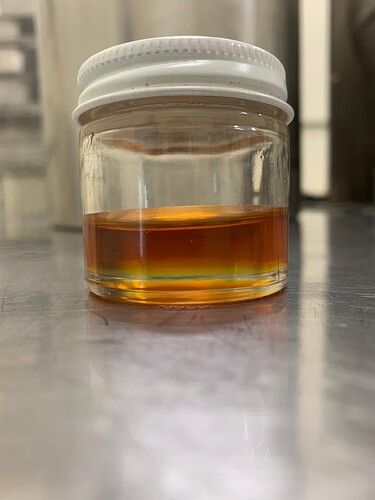After using a solvent free remediation process we are able to remove THC and THCa from crude extract or distillate. We have created a high minor cannabinoid crystal resistant distillate that is ideal for use in vape pens. After a few trials and a lot of R&D, we believe that we have an ideal process for creating a crystal resistant distillate. Our most recent COA for the latest batch is attached below. Additionally, we offer compliant as well as THC free crystal resistant distillates. With the high demand of Crystal Resistant Distillate, we have scaled up our production and are now capable of producing up to 1000 KG each month. Stay tuned for our TFree batch that will be completed by the end of the week.
Minimum order of 500 grams.
$550/KG for orders 1-30 KG.
Contact for wholesale.
TF-15 Crystal Resistant Distillate COA.pdf (256.9 KB)
So can you tell us what the other 42.5% is if its not cbd?
Also just to let you know thc needs to be under .3% to be federally compliant, the attached COA is not compliant.
Solvent free remediation sounds like remediation by degradation and that causes a LOT of side reactions and unknowns to be produced. Which would explain the cbn and “cbc” results.
How can you ensure this is safe?
14 Likes
The other percentage is mainly other cannabinoids. COA’s from KCA average 83-88% cannabinoids. Juniper does not test for the same range of minor cannabinoids that KCA does.
Our assumption would be that it is the same sort of ballast compounds seen in any other distillate. We have discussed our process and potential by products with KCA.
First and foremost, we monitor our process with our HPLC. We use those results to monitor mass balance and track THC → CBN on each run. This allows us to more accurately track the creation of any degradation products. TICs.
Our cleanup includes water washing and multiple distillation passes for any potency of crystal resistant, compliant, or t-free distillate we make.
Past your 1 R&D batch you posted, have you done more trials under different conditions. We have spent close to two years and dozens & dozens of batches developing our process from small scale to full production. We have learned and refined our process during this time.
After speaking with a representative from KCA they said that it is difficult to guarantee 100% of the compounds within a CBD product unless you know exactly what you are looking for. Additionally, we have compliant and T-Free crystal resistant distillates as well that we are awaiting results from an accredited third-party lab. The product that is shown in the COA will only be sold to facilities with hemp handler’s licenses within the state of Oregon, but we expect the compliant/t-free product to be similar.
1 Like
So where are those KCA COA’s? and why share this coa? Sharing a more accurate COA would absolutely help sell your product and put minds at ease.
I’d doubt that since regular distillate isnt being heated for a long period of time to convert thc to different cannabinoids. There for I think these unknowns are MUCH different than the impurities in your typical distillate. Impurities from distillate are usually things you couldnt remove in extraction and post processing they arent random unknown compounds being created during a reaction.
You should at minimum run a column to clean up a lot of those unknowns.
3 Likes
Yeah, i did quite a bit of r&d on this and found that it should still have chromatography ran on it to increase the potency enough. I also never planned to sell product made from heat by degradation because our main process already was remediating thc by chromatography. I produced a 95%+ TAC CRD that didnt involve degrading any compounds, in fact it was required to stay below decarb temps during the whole process to retain as much cbda as i could.
